Introduction: Exploring the Science and Promise Behind Compression Garments for Loose Skin
Aging, weight loss, and changes in body composition often bring an unwelcome companion: loose skin. Understandably, many individuals search for non-invasive methods to address this concern, prompting an important question: can compression garments help loose skin? This inquiry has gained considerable attention across anti-aging and skin care communities, given the increasing demand for solutions that are both accessible and effective. Compression garments, traditionally associated with athletic recovery and post-surgical care, have recently entered the conversation as potential allies in promoting skin retraction, improving circulation, and fostering overall skin health. To understand whether compression garments truly offer a powerful solution for smoother, healthier aging, we must explore the physiological principles at play, assess existing scientific evidence, and consider practical insights for integrating compression wear into a comprehensive skin care regimen.
You may also like: How to Tighten Loose Skin After Weight Loss: Science-Backed Strategies for a Firmer, Healthier You
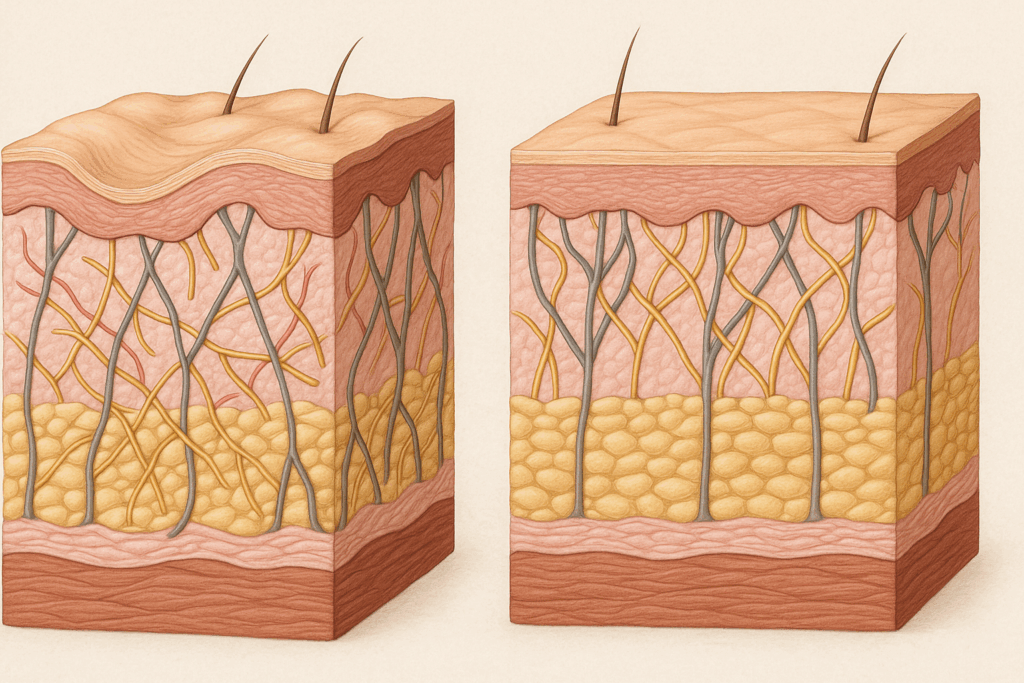
How Loose Skin Develops: The Intersection of Aging, Weight Loss, and Skin Structure
The development of loose skin is a complex process influenced by multiple factors, most notably the natural aging process, substantial weight fluctuations, and genetic predispositions. As we age, the production of two vital proteins—collagen and elastin—declines significantly. Collagen provides tensile strength, while elastin ensures elasticity and the ability for skin to return to its original shape after stretching. When these components deteriorate, the skin becomes thinner, less resilient, and more prone to sagging.
Weight loss, particularly when rapid or substantial, exacerbates this phenomenon. When the underlying fat volume decreases significantly, the skin, once stretched to accommodate the larger body mass, may not adequately recoil. Factors such as the duration of time spent overweight, the amount of weight lost, age during weight loss, and the skin’s initial quality all contribute to the extent of residual looseness. Genetic factors also play a critical role, influencing an individual’s baseline collagen and elastin levels as well as their skin’s responsiveness to external interventions. Environmental factors, such as sun exposure and smoking, further degrade skin quality over time, compounding the risk of persistent looseness.
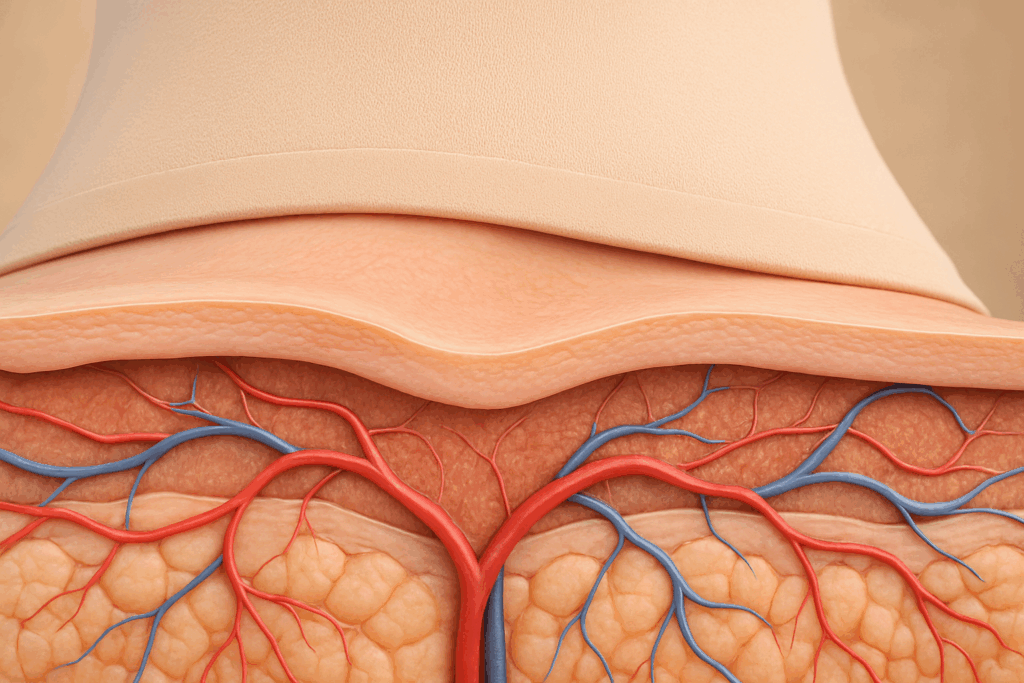
Can Compression Garments Help Loose Skin? Understanding the Physiological Mechanisms
The central question—can compression garments help loose skin?—requires a detailed exploration of how compression affects the body’s tissues. Compression garments apply consistent mechanical pressure to the skin and underlying tissues, which may promote fluid drainage, stimulate circulation, and provide mechanical support. Improved blood flow can enhance nutrient delivery to the skin, potentially supporting collagen synthesis and tissue repair.
Mechanical compression also exerts a supportive force on skin and subcutaneous tissues, offering temporary improvement in appearance by reducing sagging and wrinkles. In some cases, this mechanical support may encourage the skin to conform more closely to underlying structures, especially when worn consistently over time. Post-operative use of compression garments, such as after liposuction or body contouring surgeries, provides a clinical precedent for their efficacy in promoting skin retraction and minimizing swelling. While the effects may not equate to dramatic skin tightening, they represent a non-invasive adjunct that can contribute to overall skin health and firmness when integrated with other interventions.
Scientific Evidence: Does Compression Help with Loose Skin?
When evaluating whether compression helps with loose skin, it is important to recognize that direct clinical studies are limited. However, several bodies of research offer compelling indirect support. Studies on post-surgical patients consistently demonstrate that compression garments improve wound healing, minimize edema, and reduce scar formation. These outcomes are largely attributed to enhanced microcirculation, mechanical stabilization, and optimized tissue remodeling.
In athletic and rehabilitation contexts, compression garments have been shown to improve muscle recovery, suggesting their ability to facilitate efficient blood and lymphatic flow. While skin tightening is not the primary focus of these studies, the principles underlying enhanced tissue health remain relevant. Additionally, small-scale investigations in dermatology suggest that mechanical stimulation—through massage or pressure—can influence fibroblast activity and promote collagen deposition. Although definitive large-scale studies directly addressing compression garments for loose skin are lacking, the extrapolated benefits from adjacent fields present a strong rationale for their use as part of a holistic skin care and anti-aging strategy.

Benefits of Compression Clothes for Loose Skin: A Practical Perspective
For individuals considering compression clothes for loose skin, several practical benefits are worth highlighting. First, compression garments offer immediate visual improvements by smoothing bulges, providing a more contoured silhouette, and enhancing self-confidence. This temporary benefit can have profound psychological effects, motivating individuals to maintain healthy lifestyle behaviors conducive to long-term skin health.
Second, the enhanced circulation promoted by compression may improve the delivery of oxygen and nutrients to the skin, fostering a more vibrant and resilient appearance over time. Third, compression garments can support postural alignment and muscular support, indirectly benefiting the skin by maintaining structural integrity beneath it. Finally, the consistent mechanical stimulation provided by compression wear may contribute to long-term improvements in skin firmness, particularly when paired with complementary interventions such as hydration, topical retinoids, collagen supplements, and resistance training.
Can Compression Garments Help Loose Skin? Addressing Expectations and Realistic Outcomes
When discussing can compression garments help loose skin, it is essential to address expectations honestly and realistically. Compression garments are supportive, adjunctive tools; they are not substitutes for surgical skin tightening procedures such as abdominoplasty or body lifts. The degree of skin tightening achievable through compression wear alone will depend on multiple factors, including the individual’s age, the quality of their skin, the amount of loose skin present, and their commitment to consistent garment use.
In cases of mild to moderate skin laxity, compression garments may provide noticeable improvements over time, particularly when paired with healthy lifestyle habits that promote skin rejuvenation. However, individuals with significant skin excess, particularly after massive weight loss, should temper expectations and consider compression garments as part of a broader strategy rather than a standalone solution. Transparency about the benefits and limitations fosters realistic goals and maximizes satisfaction with outcomes.
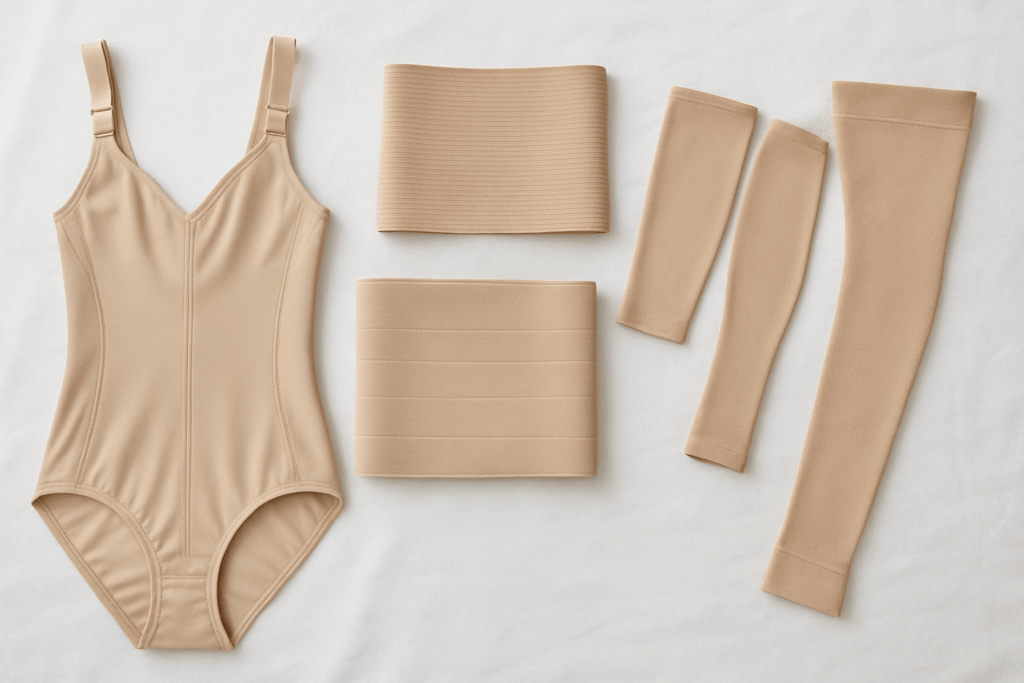
Choosing the Right Compression Garments: Key Considerations for Optimal Results
Selecting the right compression garments is pivotal for achieving the best results. Factors to consider include garment material, compression level, fit, and targeted body area. High-quality compression garments are typically made from breathable, moisture-wicking fabrics that provide firm yet comfortable support. Medical-grade compression levels (typically 20-30 mmHg) are often recommended for therapeutic purposes, although lighter compression may suffice for cosmetic goals.
A proper fit is essential; garments that are too tight may impair circulation, while those that are too loose will not provide adequate support. Targeted designs—such as abdominal binders, thigh shapers, or full-body suits—allow users to address specific areas of concern. Ease of use, durability, and aesthetic considerations also influence garment selection. Consulting with healthcare professionals or experienced fitters can provide valuable guidance, ensuring that compression clothes for loose skin are both effective and comfortable.
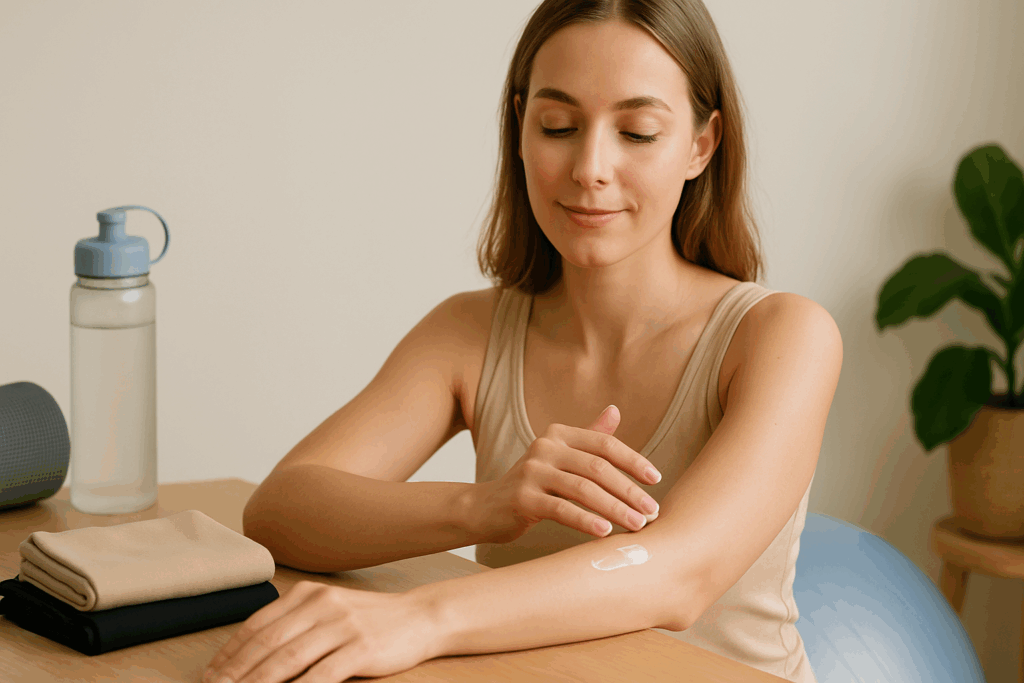
Compression and Skin Care Synergy: Integrating Garments into a Holistic Regimen
Maximizing the benefits of compression garments involves integrating them into a broader skin care and anti-aging regimen. Daily hydration, both internal and external, is fundamental for maintaining skin elasticity and suppleness. Topical treatments containing retinoids, peptides, and hyaluronic acid can support collagen production and improve skin texture. Nutritional strategies, emphasizing antioxidants, healthy fats, and collagen-promoting nutrients like vitamin C and amino acids, further enhance skin resilience.
Resistance training exercises, which build muscle mass beneath the skin, provide natural scaffolding that can reduce the appearance of looseness. Adequate sleep, stress management, and sun protection round out a comprehensive approach. When these strategies are combined with regular use of compression garments, the synergistic effects can amplify skin tightening and rejuvenation efforts, promoting smoother, healthier aging.
Can Compression Garments Help Loose Skin? Insights from Post-Surgical and Postpartum Applications
The use of compression garments in post-surgical and postpartum contexts offers valuable insights into their potential for addressing loose skin. Following cosmetic procedures such as liposuction, tummy tucks, and body contouring surgeries, surgeons routinely recommend compression wear to support skin retraction, minimize swelling, and optimize healing. Studies consistently affirm that compression enhances lymphatic drainage, reduces inflammation, and encourages the skin to conform to newly sculpted contours.
Similarly, postpartum women often use abdominal binders or girdles to support the recovery of abdominal muscles and skin after pregnancy. Anecdotal evidence and clinical observations suggest that consistent compression can expedite the normalization of skin tone and firmness, although individual results vary. While these contexts involve additional factors—such as surgical manipulation or hormonal changes—they underscore the potential for compression to positively influence skin behavior under the right circumstances.
Does Compression Help with Loose Skin After Weight Loss? Special Considerations
Weight loss, particularly after bariatric surgery or significant lifestyle changes, presents unique challenges regarding loose skin. The volume of skin left behind after major fat loss can be substantial, often necessitating multi-pronged strategies. In this context, does compression help with loose skin? The answer is nuanced. While compression garments can provide meaningful support, improve comfort, and enhance appearance, they are unlikely to completely eliminate large folds of excess skin.
However, compression wear can significantly improve quality of life during the transition period by reducing friction, preventing skin irritation, and promoting a smoother contour under clothing. Psychologically, compression garments can foster greater confidence, encouraging continued adherence to healthy behaviors. Over time, with additional interventions—such as skin-firming treatments, exercise, and, in some cases, surgery—compression garments can contribute to gradual, incremental improvements in skin appearance and health.
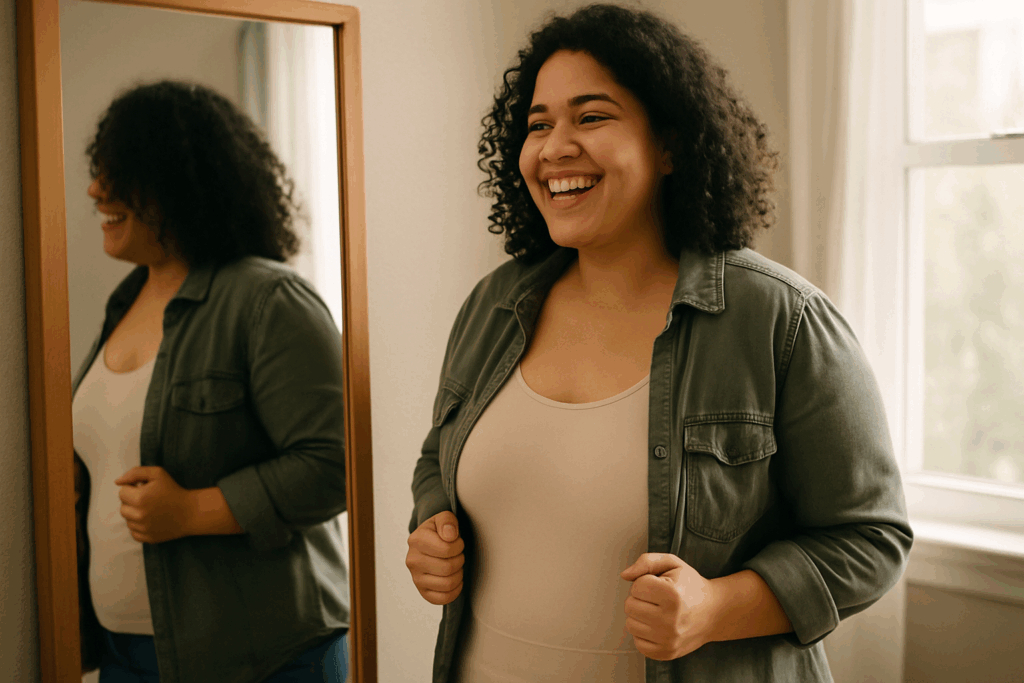
Emotional and Psychological Impacts: The Hidden Benefits of Compression Garments
Beyond their physical benefits, compression garments offer profound emotional and psychological advantages. Loose skin can be a source of self-consciousness, anxiety, and diminished self-esteem, particularly after significant weight loss or aging-related changes. Wearing compression clothes for loose skin can immediately improve body image by smoothing contours and providing a sense of physical support.
This enhanced self-perception often translates into greater confidence in social, professional, and personal contexts. Additionally, the act of wearing compression garments can serve as a tangible commitment to self-care, reinforcing positive identity changes associated with weight loss, fitness achievements, or healthy aging. The psychological lift provided by improved appearance and comfort should not be underestimated when evaluating the overall benefits of compression wear.
Long-Term Strategies: Sustaining Healthy Skin Beyond Compression Garments
While compression garments represent a valuable tool, sustainable skin health requires a long-term, multifaceted strategy. Maintaining a stable weight minimizes the risk of further stretching and damage to the skin. Regular physical activity, particularly strength training, builds supportive musculature that enhances skin appearance. Nutritional optimization, focusing on collagen-supporting foods and adequate hydration, lays the biochemical foundation for skin resilience.
Proactive skin care, including the use of medical-grade topical agents and routine professional treatments such as microneedling, radiofrequency therapy, or ultrasound-based skin tightening, can further fortify results. Periodic reassessment of skin health goals ensures that interventions remain aligned with evolving needs. By combining compression garment use with these evidence-based strategies, individuals can maximize skin vitality and promote smoother, healthier aging over the lifespan.
Frequently Asked Questions (FAQ) About Compression Garments for Loose Skin
How Quickly Can Compression Clothes for Loose Skin Show Results?
The speed at which compression clothes for loose skin show visible results varies based on several factors, including the individual’s skin elasticity, age, and the consistency of garment use. Most people report feeling an immediate improvement in contour and comfort, but true enhancements in skin firmness typically require several weeks to months of consistent wear. Unlike surgical interventions, compression garments work subtly over time by supporting circulation and lymphatic drainage. Patience is crucial, as minor incremental changes can cumulatively make a significant difference. Tracking your progress through photographs and measurements may provide more tangible evidence of long-term benefits.
Can Compression Garments Help Loose Skin? Insights Into Postpartum Recovery
For postpartum women, loose skin around the abdomen is a common concern, and many wonder: can compression garments help loose skin after childbirth? Compression wear can be particularly beneficial during the early postpartum period by offering abdominal support and encouraging natural skin retraction. The gentle pressure aids in the reduction of swelling and supports weakened muscles, helping the body transition more efficiently. While it won’t “cure” loose skin entirely, combining compression with targeted core-strengthening exercises and skin-firming treatments can enhance overall recovery. Many new mothers find that compression garments restore not only physical comfort but also emotional confidence during the healing process.
Does Compression Help with Loose Skin After Bariatric Surgery?
Patients who have undergone bariatric surgery often face dramatic body changes, making them prime candidates for exploring whether does compression help with loose skin. Compression garments can be invaluable during the immediate postoperative phase by controlling swelling, improving circulation, and helping the skin adapt to new contours. Long-term use can offer additional psychological benefits by smoothing the body’s silhouette under clothing, which often fosters a more positive body image. However, it is crucial for bariatric patients to choose medical-grade garments fitted by professionals to ensure adequate support without restricting blood flow. Consulting with a surgeon or medical provider about compression protocols tailored to bariatric recovery is strongly recommended.
Can Compression Garments Help Loose Skin? Understanding the Impact on Aging Skin
Aging skin presents unique challenges that lead many to ask, can compression garments help loose skin that has lost collagen over decades? The answer is promising but requires nuance. For mature skin, compression garments primarily function as supportive tools that enhance circulation and protect the skin’s structure. While they do not reverse aging, they can contribute to a firmer, healthier look when combined with treatments like retinoids, collagen-stimulating therapies, and proper sun protection. In aging populations, the psychological boost from improved appearance and posture alone can be transformative, supporting both physical health and emotional well-being.
What Are the Best Fabrics for Compression Clothes for Loose Skin?
Choosing the right fabric is essential when investing in compression clothes for loose skin. High-quality blends that include nylon, spandex (Lycra), and microfiber offer the best balance of elasticity, durability, and breathability. Advanced fabrics often incorporate moisture-wicking technology to maintain skin comfort, especially for extended wear. Compression levels are influenced not only by garment design but also by the fabric’s tension and weight, so opting for medical-grade materials ensures consistent pressure distribution. Individuals with sensitive skin may benefit from hypoallergenic options to avoid irritation. Regular garment care, such as hand washing and air drying, helps maintain fabric integrity and compression effectiveness over time.
How Does Sleepwear Compression Compare to Daytime Compression Garments?
Specialized sleepwear designed for compression is gaining popularity, but how does it compare to traditional daytime compression garments for loose skin? Sleepwear compression typically uses lighter, gentler pressure to avoid discomfort during long, uninterrupted periods of rest. This form of compression focuses on supporting lymphatic drainage overnight, reducing morning puffiness, and encouraging skin rejuvenation. While daytime compression clothes for loose skin aim for firmer contouring and postural support, nighttime options emphasize recovery and maintenance. For optimal results, many experts recommend using a combination of both: firmer support during active hours and gentle compression during sleep to maximize skin health benefits.
Does Compression Help with Loose Skin When Combined with Skincare Products?
An increasingly popular approach involves pairing compression with topical skin treatments, leading to the question: does compression help with loose skin more effectively when combined with skincare products? Compression can indeed enhance the efficacy of certain topical treatments by improving their absorption and promoting better blood flow to the skin. For example, applying retinol, hyaluronic acid, or peptide serums before donning a compression garment can create an “occlusive” environment that amplifies the products’ penetration. This strategy mirrors the “slugging” method in skincare, where sealing products enhance their benefits. However, it is crucial to allow products to absorb fully before wearing garments to prevent fabric damage or skin irritation.
Can Compression Garments Help Loose Skin? Debunking Common Myths
Misconceptions abound about compression wear, making it vital to ask: can compression garments help loose skin, or are they merely a temporary fix? While compression garments deliver immediate visual improvements, dismissing their role as merely cosmetic overlooks their physiological benefits. They do stimulate better circulation, support natural healing processes, and can encourage incremental improvements in skin tone when worn consistently. However, they are not miracle cures; sustainable results still require integrated efforts like hydration, nutrition, and exercise. Understanding the realistic scope of what compression can and cannot do empowers individuals to use them effectively as part of a holistic approach.
How Should I Transition Away from Compression Clothes for Loose Skin?
After months of diligent use, some individuals wonder how best to transition away from compression clothes for loose skin. Abruptly discontinuing wear can sometimes cause a noticeable change in contour, as tissues may temporarily lose some of the supported structure. A gradual tapering strategy—such as reducing wear time by a few hours each day over several weeks—allows the body to adjust organically. Supporting the transition with continued strength training and skin-firming treatments can help maintain gains. Monitoring skin texture and tightness during this phase provides valuable feedback on whether intermittent garment use might still be beneficial for ongoing maintenance.
What Future Innovations Could Improve Compression Solutions for Loose Skin?
The future of compression therapy is bright, with emerging technologies poised to revolutionize how we address loose skin concerns. Smart fabrics embedded with biofeedback sensors are already being tested to provide real-time data on skin tension, hydration, and circulation. Innovations like adjustable compression zones within garments allow for personalized support that adapts throughout the day. Additionally, research into biodegradable, therapeutic textiles infused with skin-firming agents offers exciting possibilities. As public interest grows in non-invasive anti-aging methods, the convergence of technology, material science, and dermatology promises to make compression solutions even more sophisticated and effective for managing loose skin.
Conclusion: Can Compression Garments Help Loose Skin? Embracing a Comprehensive Path to Healthier Skin
In answering the pivotal question—can compression garments help loose skin?—the evidence suggests that while compression garments alone may not provide dramatic skin tightening, they offer meaningful benefits as part of a comprehensive skin health strategy. By promoting circulation, supporting tissue integrity, enhancing appearance, and fostering positive emotional outcomes, compression garments serve as valuable allies in the pursuit of smoother, healthier aging.
For those grappling with loose skin due to aging, weight loss, or other life transitions, compression wear provides an accessible, non-invasive option to support their journey. Combined with targeted skin care, nutrition, exercise, and, when necessary, professional treatments, compression garments can significantly enhance quality of life and self-confidence. Ultimately, embracing a holistic approach—one that integrates the science of compression with broader health and wellness practices—offers the most powerful path toward achieving and maintaining healthy, resilient skin over time.
Further Reading:
Metabolic and Bariatric Surgery Blog
The Truth About Shapewear: Does Wearing Shapewear Help Tighten Skin